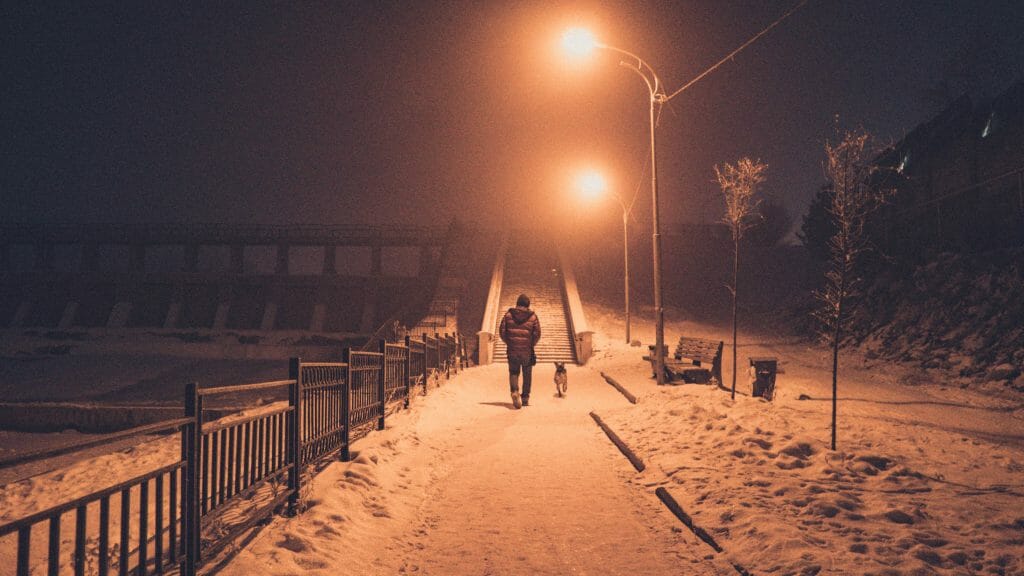LED lighting in commercial, residential, and public venues has shot up in recent years, with over half of all lights sold being LED-based. This is because they are environmentally friendly and can withstand the harshest and coldest weather conditions year-round. Given their advantages in frigid temperatures, LED lights are an excellent choice for outdoor lighting in parks and roadways in New Jersey.
Below, we list several reasons why LED lighting in wintry weather conditions will prove itself the best choice. So, read on, as you might want to switch out all your lights to LEDs by the end.

Advantages of LEDs in Winter
Durability in Cold Weather
LED lighting is becoming a popular street light option. This is because they can withstand extreme temperatures, and even thrive in cold environments. In the winter, cold weather can start interfering with how bright a regular bulb burns due to its excessive heat emission. This can cause the bulbs to burst, leaving you with having to change the bulb in the cold. Luckily, LEDs do not suffer from this problem. Their light output and efficacy increase as the temperature drops making them a great solution for outdoor lighting.
Stronger Lighting
Parks are also switching their lighting systems to LEDs. This is because, in the winter, the cold weather can start interfering with how bright a regular bulb burns. If it is cold enough, the bulb will have trouble shining bright and the pressure inside reduces, a problem that LEDs do not suffer from.
No Warm-Up Time
Regular bulbs can take a long time to reach their most outstanding brightness in moderate weather. In winter, this can take even longer. As the system starts to heat up you might suffer inadequate lighting for several minutes.
LED lights do not have this problem since they are built to withstand drastic weather changes. They begin working to their full potential as soon as you activate them, which is a huge plus in those dark winter months.
Uses Less Power
One of the main reasons so many people are installing LED lighting these days is the cost of running lights. LED lights use little energy when in use. As a result, an LED lighting budget can stretch much further as they pull less power, meaning you can have them on for longer or run a brighter facility.
Performance
LED lights end up lasting longer due to the decreased use of power to produce light. This ends up saving you money and time from not having to change bulbs as often. You will feel confident you have the proper lighting in your parks, cold storage freezers, parking lots, and more.

How LED Lighting Can Help You
The above reasons should have you reaching to find a new LED lighting solution. We have vast experience installing LED lighting in many different contexts at Olympia Lighting and are ready to help you out. Get in contact to learn how we can put you on the path to a brighter home or office today.
























